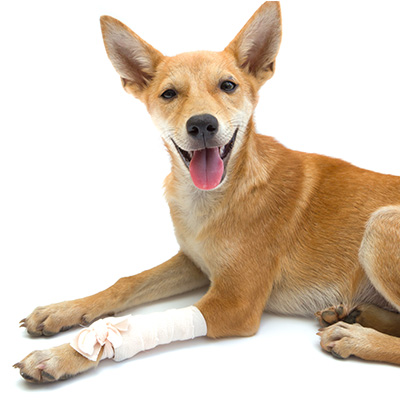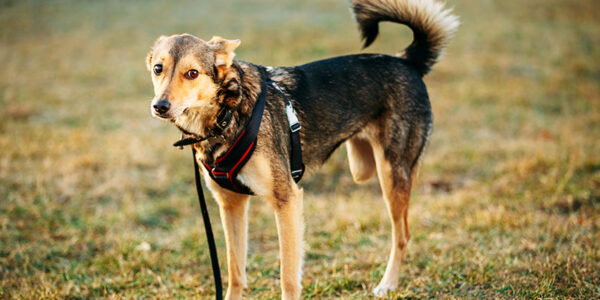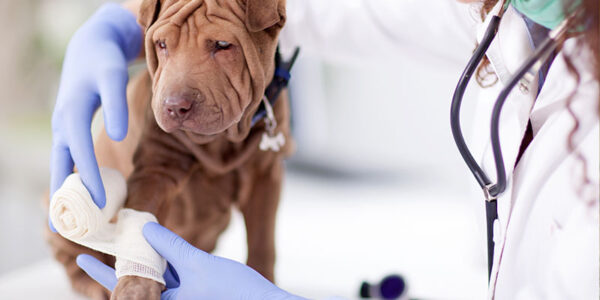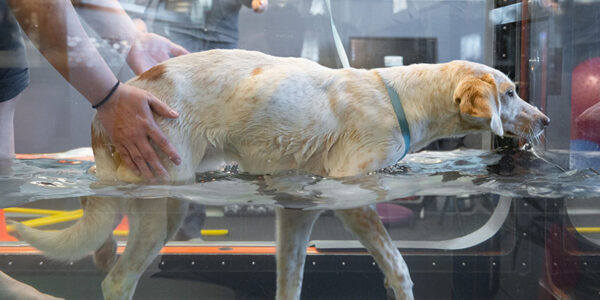
In this blog:
How to Tell If a Dog Has a Broken Leg
Types of Broken Bones in Dogs
Causes of Broken Legs in Dogs
What to Do If You Think Your Dog Has a Broken Leg
Transporting Your Injured Dog
Treatment for Dogs With Broken Legs
Caring for Your Dog During the Healing Process
Broken legs are a common injury among dogs, unfortunately, and can happen when you least expect it. It is very upsetting to see your dog in pain, but it’s important to try and remain calm, assess the situation, and get your dog to the vet as quickly and carefully as possible. Dogs can sense nervousness and fear, so keeping calm will help you and your dog in getting assistance faster with less stress.

How to Tell If a Dog Has a Broken Leg
Leg injuries in dogs are fairly easy to identify, if you know what to look for. .
Here are some signs your dog may have a broken leg:
- Sudden lameness or limping
- Swelling of a limb
- One leg held up
- Open wounds or bruises
- Vocalization from pain (whining, crying)
Types of Broken Bones in Dogs
Broken bones are typically called fractures in veterinary medicine. A bone may be completely fractured or partially fractured in any number of ways. There are two types of fractures:
- Open fractures (commonly referred to as compound fractures) expose the bone at the wound site. These fractures are at high risk for infection because they commonly contain dirt and bacteria.
- Closed fractures are broken bones that do not go through the skin.
Causes of Broken Leg in Dogs
There are many different ways dogs can break their legs. Here are some common causes of broken legs in dogs:
- Rough play
- Traffic accidents
- Falls
- Age (younger dogs are at higher risk for fractures since their bones are not fully formed))
- Bone cancer
- Diet (not enough calcium or too much vitamin A)
- Breed (toy breeds have smaller bones that can break more easily)
- Sports
What to Do If You Think Your Dog Has a Broken Leg
While a broken leg is normally not life-threatening for a dog, it can be deadly if the broken bone impacts an organ or causes a part of the body to bleed. Therefore, it is important to have your dog examined by a vet as soon as possible. Immediate attention allows you to manage any dangerous complications, treat pain, and prevent further injury.
If you notice a sudden injury in your dog, take a moment to assess your dog’s condition. Is there an open wound or major swelling? If you see an open wound, apply pressure to the area with a clean cloth until you get to the vet. It is also important to keep the fractured site as still as possible as you transport your dog.
Transporting Your Injured Dog
Transporting an injured dog to the vet can be tricky. If your dog is already in pain, transportation can be extra stressful. If possible, seek the help of another person to drive while you keep your dog calm and still. Using pillows or thick blankets to cushion the broken leg will help keep it still in the vehicle.
Once at the veterinary hospital, let the staff know you have an injured dog in the car, so they can help remove the dog safely. If you bring a large dog in yourself, use a blanket as a sling to help the dog walk.

Treatment for Dogs With Broken Legs
Treatment for broken legs will depend on whether the fracture requires surgery or not. In the case of a simple closed fracture, a cast or leg splint may be all that is required for healing. With a cast or splint, it is important to keep the area clean and dry.
If the fracture does require surgery, some surgical methods may be a better choice than others depending on your dog’s age, home environment, financial considerations, and pet insurance. Your veterinarian will discuss options with you and recommend the best treatment options for your dog.
If a hospital stay is needed, the length of that stay will vary depending on the treatments your dog needs and/or ability to care for him at home.

Physical Therapy for Broken Bones
Your vet may recommend physical therapy, such as the underwater treadmill pictured here at Harmony Animal Hospital, or supported walking. Physical therapy can ensure your dog heals properly by restoring muscle strength and proper walking alignment.

Caring for Your Dog During the Healing Process
Once your dog is back at home, the healing process isn’t over. Home care is very important for your dog and there are many things you can do to help them along the path to recovery.
In cases of a splint or a cast, you will need to:
- Monitor the bandage to make sure it isn’t too tight or too loose
- Follow your vet’s instructions for bandage care
- Make sure your dog isn’t licking its bandage (a cone is a good way to prevent this)
- Administer any prescribed pain medications on schedule.
- Keep excessive movement to a minimum. No jumping!
If you become worried about any issues during home care, do not hesitate to contact your vet.
At Harmony Animal Hospital, we are here to help with bone fractures or any other type of injury. In addition to being a full service veterinary hospital, we also offer rehabilitation therapy with a certified rehabilitation veterinary specialist to help your pup heal in the best possible ways.

